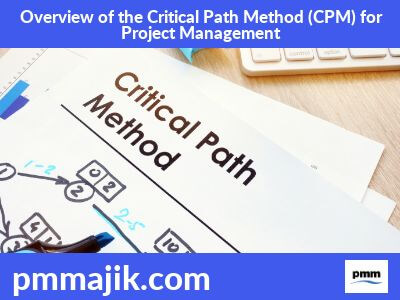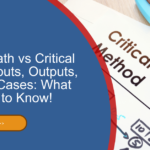One of the most important concepts in Project Management, the Critical Path Method (CPM) can be traced back to the Manhattan Project in the 1940’s.
The size and importance of this project meant that there was great pressure to deliver results on time. CPM was devised as a result of this.
What is CPM?
CPM is a planning technique which involves identifying the tasks involved in the completion of a project, and the dependencies between those tasks. Once you have broken your project down in this way you will be able to identify the longest run of dependent tasks, namely those tasks without which the project will fail. Measuring them from beginning to end will determine the critical path of the project.
CPM key steps
Identify each task
Each task within the project is listed individually and those that cannot be started until others have been completed are identified. A work breakdown structure can be used which notes every deliverable.
The main tasks should be identified first, before being broken down into smaller tasks.
Establish dependencies
Tasks on the critical path will depend on the completion of others, therefore you should identify the predecessor of each task. This will enable you to establish the correct activity sequence.
To facilitate this, you should identify which task should happen before and after and which should be finished at the same time as this task.
Construct the network diagram
Once your tasks and dependencies have been identified, you can construct your network diagram, also known as the critical path analysis chart. This visual representation will allow you to see the order of the tasks based on dependencies.
The chart can be hand-drawn or created using a specialised software programme.
Estimate task completion time
You will now need to estimate the amount of time that each task will take. Smaller projects are likely to be measured in days, however longer, more complex projects may be measured in weeks.
The duration can be estimated based on previous projects or the knowledge of an experienced member of the team, however a more realistic way to measure this is to use the 3-point estimation method where you will calculate an average time based on the best case, most likely and worst case estimates.
Critical path identification
A simple way to identify your critical path is to look at your network diagram and pick out the longest sequence of tasks. The path should be the longest in days or weeks, not the path with the most tasks.
Alternatively, you can use the Forward Pass/Backward Pass technique, where you will identify the earliest and latest start and finish times for each task.
Show your progress
Your critical path diagram should be updated with actual task completion times as your project progresses. This will give a more realistic idea of the project’s completion date and will enable you to see if you are ahead, on track, or behind.
Float or Slack
Float or slack is concept related to CPM and identifies the amount of time that a particular task can be delayed without delaying the next task or the overall project. You may hear this referred to as “free float” and “total float” respectively.
If a task cannot be delayed without causing a hold-up to the project or dependent tasks, then this means that the task has “zero float”.
Typically, tasks with zero float are placed at the top of the priorities list, whilst high float tasks are further down.
Advantages and Disadvantages of CPM
Advantages
Reduces risk
CPM allows you to easily identify critical tasks, ensuring that none are overlooked. The CPM chart also makes dependencies between tasks visible creating a clear process.
Systematic
The systematic approach of CPM makes the organisation of large and complex projects more effective in terms of planning, scheduling and execution.
Allows for greater planning
Calculating the float for each task enables the Project Manager to control the length of the project and identify whether delays in task completion will affect the overall deadline.
The Project Manager can also use the chart to identify whether a project can be compressed to reduce the duration of the project.
Optimising efficiency
Project Managers can allocate their resources appropriately, reducing the duration and/or cost.
Disadvantages
Complex and expensive
This method can be difficult for a beginner to understand, particularly in large, complex projects where there may be multiple or unclear critical paths. Specific software can be used to manage large projects however this is expensive.
Time consuming
As a result of its complexity, CPM can be time consuming, particularly if staff need training in its application.
Difficult to manage
CPM relies on close management of tasks which in large projects can become difficult if tasks are not stable and well-defined.
Inflexible
Sudden changes in the implementation of the project cannot be effectively handled when using CPM. Any changes require the chart to be redrawn which can be difficult in the later stages. The human aspect, and their schedule changes isn’t taken into account with CPM. A staff absence for example may result in a task being delayed and a redraw of the chart required.
Summary
The Critical Path Method (CPM) can help with the successful delivery of your project. However, when applying the technique ensure that the project needs this level of monitoring as it does come at a cost in time and effort.
As with most things in project management, look to make use of the elements that are appropriate for your project.






